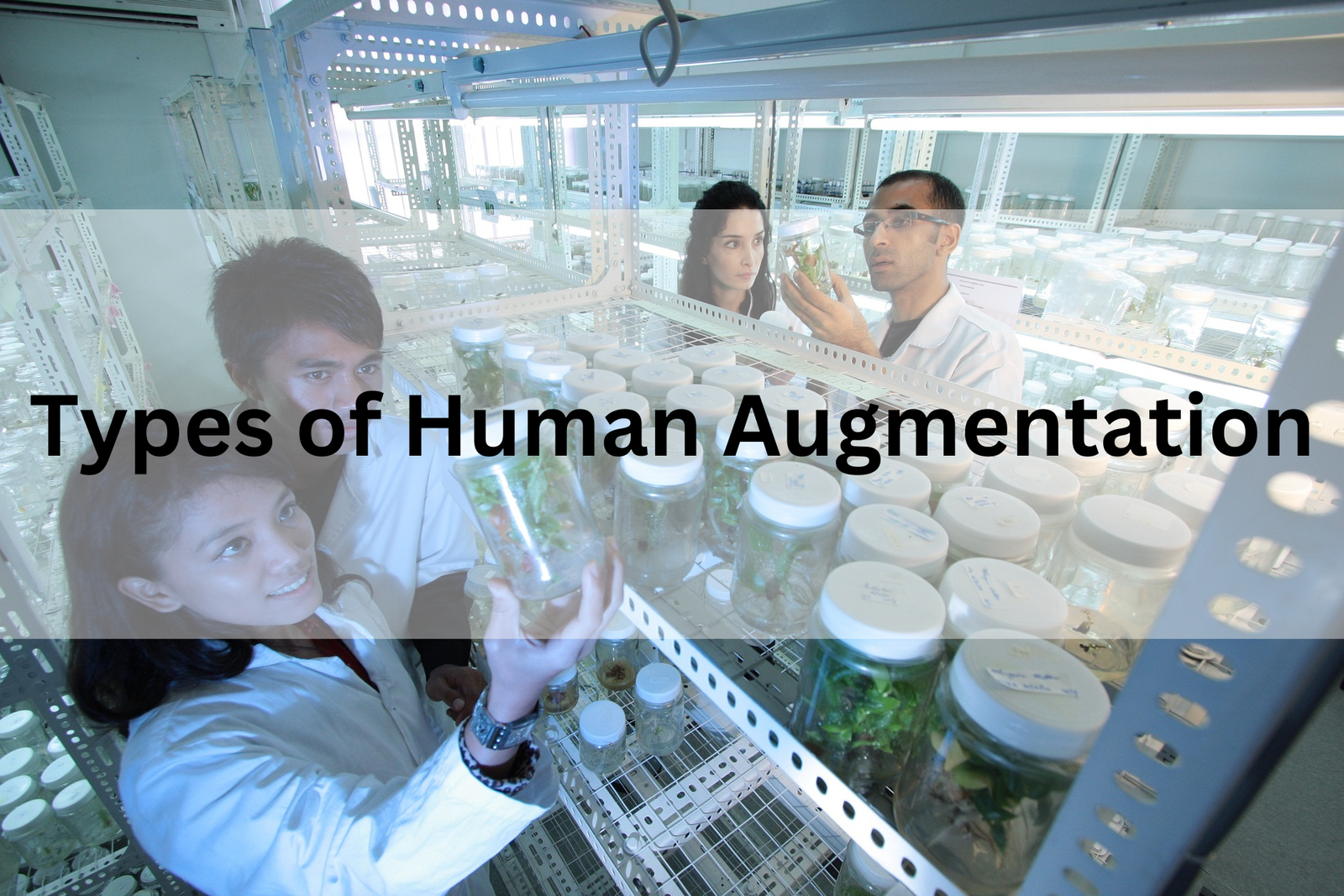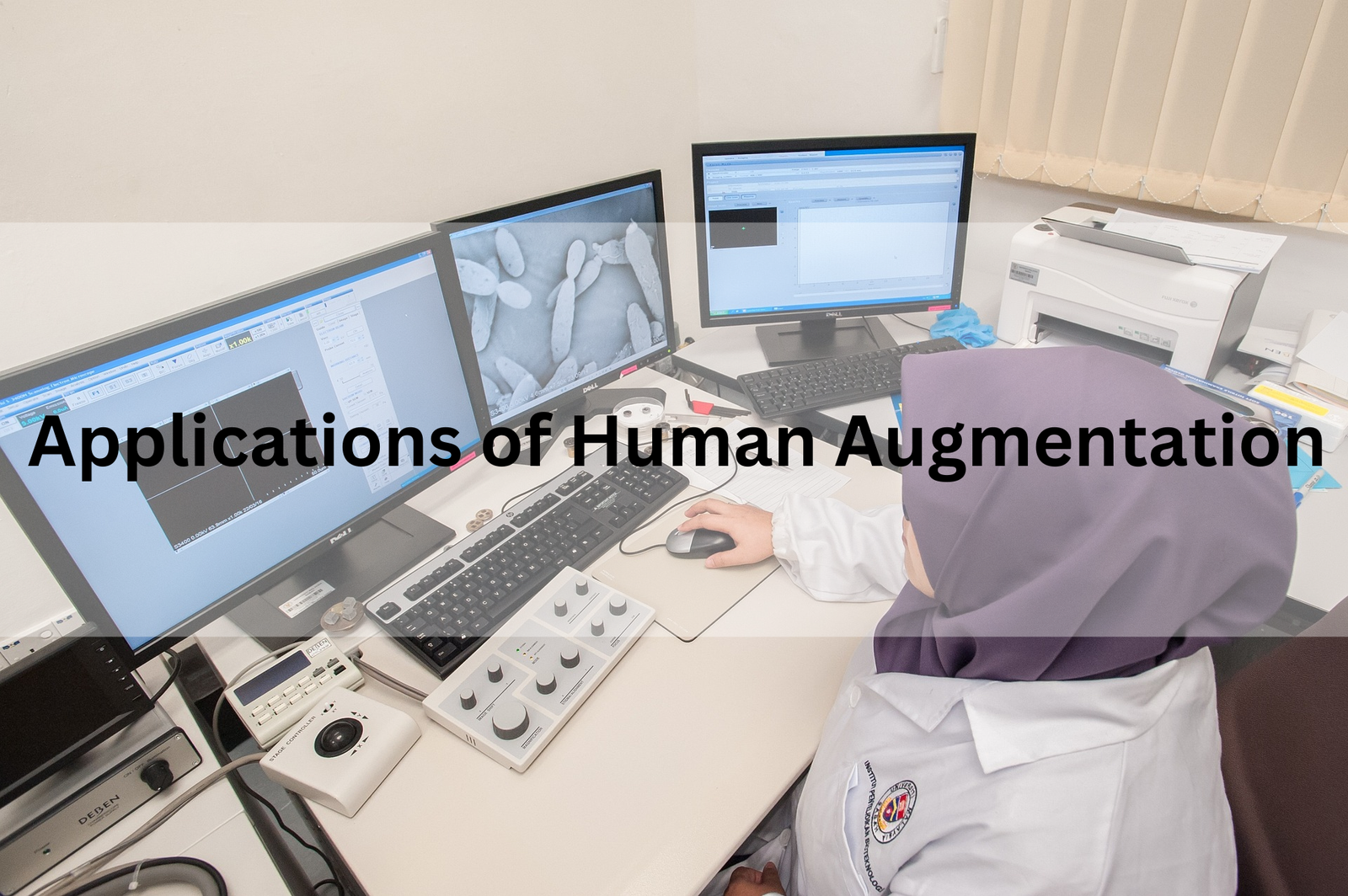Human augmentation is shaping up to be one of the most groundbreaking shifts of the 21st century. As we dive deeper into 2024, it’s not just about adding new features to our lives; it’s about fundamentally rethinking what it means to be human. Imagine a world where our physical strength, cognitive abilities, and sensory experiences are not just enhanced but transformed through advanced technology. Human augmentation is not a far-off fantasy but a rapidly evolving reality that’s starting to blend seamlessly into our everyday routines.
This article takes you on a journey through this fascinating realm, exploring how human augmentation has developed over time and what it looks like today. We’ll delve into the various types of augmentation—how we’re amplifying our physical capabilities, boosting our brains, expanding our senses, and even reengineering our very biology. We’ll also examine the technologies driving these changes, from wearable gadgets to implantable devices, and their diverse applications, whether in healthcare, defense, or entertainment.
But it’s not all about shiny new tech. We’ll tackle the big questions surrounding the ethics of augmentation, like privacy issues, accessibility, and the impact on our identity and society. There are technical challenges and potential risks to navigate, and understanding these will be crucial as we forge ahead. As we look to the future, we’ll consider emerging trends and how artificial intelligence is shaping the landscape of human enhancement.
Understanding Human Augmentation
Human augmentation is an expansive and fascinating field dedicated to enhancing human abilities beyond their natural limits through a blend of cutting-edge technologies. This dynamic area merges advancements in biotechnology, robotics, artificial intelligence, and neuroscience to push the boundaries of human physical and cognitive functions. The goal is to amplify our capabilities, extend our lifespans, and improve our overall quality of life by seamlessly integrating these technologies into our everyday lives.
While the idea of augmenting human abilities isn’t new—historically, humans have always sought ways to enhance their skills, from basic tools to early prosthetics—the modern landscape of human augmentation has experienced extraordinary growth. With the advent of advanced neural implants, sophisticated prosthetics, and a deeper understanding of our biology, we are now witnessing a revolution in enhancement technologies. As we step into 2024, these innovations are not only becoming more refined and accessible but are also starting to make a significant impact on how we live and experience the world. The journey from simple aids to the sophisticated devices of today highlights a remarkable evolution in our quest to enhance human potential.
Why Human Augmentation Matters in 2024
In 2024, human augmentation has become a pivotal aspect of our technological landscape, addressing the inherent limitations of both body and mind with innovative solutions. It offers transformative possibilities for those with physical disabilities or cognitive impairments, providing tools and enhancements that were once the stuff of science fiction. Beyond individual benefits, human augmentation is set to revolutionize entire industries. In healthcare, it holds the promise of more effective treatments and rehabilitation options; in defense, it could enhance soldier capabilities and operational efficiency; and in entertainment, it opens new avenues for immersive and interactive experiences.
As we face an array of complex global challenges—from health crises to environmental issues—human augmentation offers a beacon of hope. It brings forth creative solutions that can significantly expand our capabilities and push the boundaries of what we thought was possible. By harnessing these advancements, we are not just improving individual lives but potentially transforming entire sectors and societies, setting the stage for a future where our enhanced abilities lead to unprecedented innovations and improvements in our daily lives.
Types of Human Augmentation

Physical Augmentation: Enhancing Strength and Endurance
Physical augmentation technologies are revolutionizing how we approach human strength and endurance. These advancements include cutting-edge exoskeletons and wearable devices designed to support and amplify physical movements. Imagine lifting heavy objects effortlessly or enduring physically demanding tasks without feeling the strain—these are now achievable feats thanks to modern technology. Exoskeletons, for example, are increasingly being utilized not only in industrial environments to help workers perform their tasks with greater ease but also in rehabilitation centers to aid those recovering from injuries. This technology opens up new possibilities for individuals with physical limitations, allowing them to accomplish more and engage in activities that were once out of reach.
Neural Augmentation: Boosting Cognitive Abilities
Neural augmentation is at the frontier of enhancing our cognitive capabilities, and it’s making significant strides with technologies like brain-computer interfaces and neuroprosthetics. These innovations enable direct interaction between the brain and external devices, potentially revolutionizing how we manage cognitive functions such as memory, learning, and problem-solving. For instance, brain-computer interfaces could help individuals with neurological disorders regain lost functions, while neuroprosthetics may improve cognitive performance and even expand our mental abilities beyond natural limits. The potential of neural augmentation to assist those with cognitive impairments and enhance overall brain function is truly exciting, pushing the boundaries of what our minds can achieve.
Sensory Augmentation: Expanding Your Perception
Sensory augmentation is all about enhancing or extending our senses beyond their natural capabilities. This can involve technologies that improve vision, hearing, or even introduce entirely new sensory experiences. For example, augmented reality (AR) and virtual reality (VR) systems offer immersive environments that can heighten our sensory perception and provide innovative ways to interact with digital content. AR can overlay digital information onto the real world, while VR can transport us to entirely new worlds, transforming how we experience our surroundings. These technologies are not only enhancing our sensory experiences but also reshaping how we engage with information and interact with the world around us.
Genetic Augmentation: The Future of Customized Humans
Genetic augmentation represents one of the most groundbreaking approaches to human enhancement. By focusing on modifying our genetic material, this field aims to improve health and human capabilities at a fundamental level. Advances in genetic engineering, such as CRISPR technology, have made it possible to make precise alterations to DNA, potentially eliminating hereditary diseases and enhancing both physical and cognitive traits. The idea of creating customized humans with tailored abilities is no longer a distant dream but an emerging reality. However, this revolutionary approach also brings up complex ethical and societal questions, as we grapple with the implications of modifying the very blueprint of human life. As we advance in this field, it’s crucial to consider the broader consequences and ensure that these technologies are developed and used responsibly.
Technologies Driving Human Augmentation
Wearable Technology: From Fitness Trackers to Exoskeletons
Wearable technology has become a cornerstone of modern human augmentation, offering an array of devices that seamlessly integrate into our daily lives. Fitness trackers and smartwatches are perhaps the most familiar examples, diligently monitoring everything from heart rate and sleep patterns to daily steps and exercise routines. These gadgets provide users with valuable insights into their physical health, enabling them to fine-tune their lifestyle choices for better well-being. But the innovation doesn’t stop there. Exoskeletons, a more advanced form of wearable tech, represent a remarkable leap forward. Designed to support and enhance physical tasks, exoskeletons help individuals lift heavier objects, perform strenuous activities with less fatigue, and even assist in rehabilitation. By combining comfort with cutting-edge technology, wearables are redefining what’s possible in health and performance enhancement.
Implantable Devices: The New Frontier in Health Monitoring
Implantable devices are ushering in a new era of health monitoring, offering unprecedented levels of insight into our physiological states. Unlike external wearables, these devices are embedded within the body, providing continuous, real-time data on critical health parameters. For example, glucose monitors help individuals with diabetes manage their blood sugar levels with precision, while cardiac implants track heart rhythms and detect potential issues before they become critical. This internal monitoring enables proactive health management, allowing for early intervention and personalized treatment strategies. The integration of implantable devices into everyday life is transforming healthcare by making it more responsive and tailored to individual needs, paving the way for a future where medical care is both highly precise and highly personalized.
Neurotechnology: Interfacing with the Brain
Neurotechnology is at the cutting edge of human augmentation, focusing on creating systems that interact directly with the brain. This field encompasses brain-computer interfaces (BCIs) and neuroprosthetics, technologies that allow users to control devices through neural signals. Imagine being able to operate a computer or a prosthetic limb simply by thinking about it—this is the potential that neurotechnology offers. BCIs are especially transformative for individuals with motor impairments, providing them with new ways to interact with the world and regain independence. Beyond these practical applications, neurotechnology also explores the frontier of cognitive enhancement, seeking ways to boost mental capabilities and expand our understanding of the brain’s potential. As research in this field progresses, it promises to unlock new possibilities for both improving quality of life and pushing the boundaries of human cognition.
Biotechnology: Genetic Engineering and Beyond
Biotechnology is revolutionizing human augmentation by harnessing the power of biological systems to advance medical and enhancement technologies. At the heart of this field is genetic engineering, which allows for precise modifications to DNA, offering the potential to correct genetic disorders and enhance physical and cognitive traits. Regenerative medicine, another crucial aspect, focuses on repairing or replacing damaged tissues and organs using stem cells and other biological techniques. Synthetic biology extends these innovations further, creating new biological parts, devices, and systems that can address a wide range of health and enhancement needs. As biotechnological methods continue to evolve, they hold the promise of providing groundbreaking solutions for a variety of challenges, from treating diseases to augmenting human capabilities in ways that were once the realm of science fiction.
Applications of Human Augmentation

Medical Enhancements: Revolutionizing Healthcare
Human augmentation is dramatically reshaping the medical field, introducing groundbreaking treatments and rehabilitation methods that were once the stuff of science fiction. Advanced prosthetics and bionic limbs now offer unprecedented levels of functionality, allowing individuals who have lost limbs to regain their mobility and independence with remarkable precision and ease. Neural implants are paving the way for new treatments for neurological disorders, potentially restoring lost functions or even enhancing cognitive abilities. Meanwhile, gene therapies are tackling the root causes of genetic diseases, offering hope for cures that were previously unattainable. These medical enhancements not only improve the quality of life for individuals with disabilities but also set the stage for a future where healthcare is more preventative and personalized. By tailoring treatments to the specific needs and genetic profiles of individuals, these technologies promise to transform patient care, making it more effective and responsive to the unique challenges of each person.
Military and Defense: Augmenting Soldier Capabilities
In the high-stakes world of military and defense, human augmentation is enhancing the capabilities of soldiers in ways that significantly impact their performance and safety. Exoskeletons, for instance, are providing soldiers with increased strength and endurance, enabling them to carry heavy loads and perform physically demanding tasks with less fatigue. Augmented reality systems are being integrated into helmets and gear, providing real-time information and improving situational awareness on the battlefield. Cognitive enhancers are helping soldiers maintain peak mental performance under extreme stress, aiding in faster decision-making and enhanced strategic thinking. These advancements not only bolster operational effectiveness but also contribute to the safety and well-being of military personnel, offering a decisive advantage in complex and high-pressure environments.
Workplace Productivity: Enhancing Performance and Efficiency
Human augmentation technologies are making waves in the workplace, offering innovative solutions to boost productivity and efficiency. Wearable devices that track health metrics and performance are helping employees monitor their well-being and optimize their work habits. Cognitive enhancers and tools powered by augmented reality are transforming how tasks are performed, making complex processes more manageable and collaborative efforts more effective. For example, AR can overlay digital information onto physical objects, aiding in training and complex problem-solving tasks. By leveraging these technologies, organizations are not only enhancing individual capabilities but also streamlining workflows and fostering a culture of innovation. The result is a more dynamic and efficient work environment where employees can thrive and contribute more effectively to their organizations’ goals.
Entertainment and Gaming: Immersive Experiences Redefined
In the entertainment and gaming sectors, human augmentation is setting new standards for immersive experiences, taking engagement and enjoyment to unprecedented levels. Virtual reality (VR) is creating fully immersive environments where users can interact with digital worlds in a lifelike manner, offering experiences that are both exhilarating and deeply engaging. Augmented reality (AR) is enhancing these experiences further by blending digital elements with the real world, creating interactive scenarios that captivate users’ attention and provide new ways to experience content. Whether it’s through realistic simulations, interactive storytelling, or dynamic gaming environments, these technologies are pushing the boundaries of what’s possible in entertainment. They are redefining how users connect with and experience digital content, making each interaction more immersive, engaging, and memorable.
Technical Challenges in Human Augmentation

Despite the exciting possibilities of human augmentation, it comes with its fair share of technical challenges that need to be addressed. Creating technologies that seamlessly integrate with human physiology and function reliably over time is no small feat. Issues such as ensuring compatibility between different systems, maintaining long-term durability of devices, and managing the complexity of advanced interfaces all present significant obstacles. Engineers and researchers must tackle these problems to develop augmentation solutions that are not only effective but also practical for widespread use. The path to successful implementation is paved with meticulous design, rigorous testing, and continuous refinement to overcome these technical barriers.
Potential Health Risks and Safety Concerns
Human augmentation technologies, while promising, also bring potential health risks and safety concerns that cannot be ignored. For example, implantable devices, while revolutionary, can introduce risks such as infections or adverse bodily reactions. Similarly, genetic modifications carry the possibility of unforeseen long-term consequences that could impact an individual’s health in unpredictable ways. To ensure these technologies are safe, comprehensive research, stringent testing, and vigilant regulatory oversight are essential. These steps are crucial to minimize risks and protect users, ensuring that augmentation advancements do not compromise health and well-being.
Societal Impacts and Psychological Effects
The societal and psychological implications of human augmentation are profound and warrant careful consideration. As these technologies become more integrated into everyday life, they could significantly alter social dynamics, personal relationships, and mental health. The advent of such technologies might create new social divides or exacerbate existing inequalities, as access to augmentation could be uneven. Additionally, the psychological impact of enhancing human abilities could affect self-perception and societal expectations. It’s important to understand and address these potential effects to foster a supportive environment where augmentation technologies contribute positively to society without causing undue stress or division.
Legal and Regulatory Hurdles
Navigating the legal and regulatory landscape of human augmentation technologies is a complex challenge. As these innovations advance rapidly, there is a pressing need for comprehensive legal frameworks that can keep pace with their development. Crafting regulations that protect individual rights, ensure ethical usage, and address emerging concerns requires collaboration among policymakers, technologists, and ethicists. The goal is to establish clear guidelines that govern the use of augmentation technologies while balancing innovation with protection and fairness. Effective regulation will be crucial in guiding the responsible deployment of these technologies and addressing the myriad ethical and legal questions they raise.
Future Trends in Human Augmentation
As human augmentation continues to evolve, several emerging technologies are poised to capture our imagination and reshape the future. Innovations in neurotechnology, biotechnology, and artificial intelligence (AI) are leading the charge, promising breakthroughs that could redefine the boundaries of human capabilities. Neurotechnology is advancing rapidly, with developments in brain-computer interfaces and neural implants opening new avenues for cognitive enhancement and communication. Biotechnology, particularly through advances in genetic engineering and regenerative medicine, is set to transform how we approach health and longevity. AI is enhancing all these fields, providing the analytical power and automation needed to push the envelope of what’s possible. Keeping abreast of these technologies not only highlights the exciting potential of human augmentation but also prepares us for the profound changes they may bring to our lives.
Looking ahead, predictions for human augmentation in the next decade paint a picture of remarkable progress and innovation. We can expect to see even more sophisticated and integrated augmentation technologies that blend seamlessly into our daily lives. Advances in neurotechnology might lead to more intuitive and natural interfaces between humans and machines, making previously sci-fi concepts a reality. Biotechnology could usher in personalized medicine that not only treats but also preempts diseases before they manifest. AI will likely drive the development of smarter, more adaptive augmentation systems, capable of evolving with our needs and preferences. These advancements promise not only to enhance individual capabilities but also to tackle broader societal challenges, from healthcare to productivity. As we navigate this exciting frontier, staying informed and engaged with these trends will be crucial for harnessing the full potential of human augmentation and addressing the accompanying ethical and practical considerations.
for more details visit our Technology Section.









